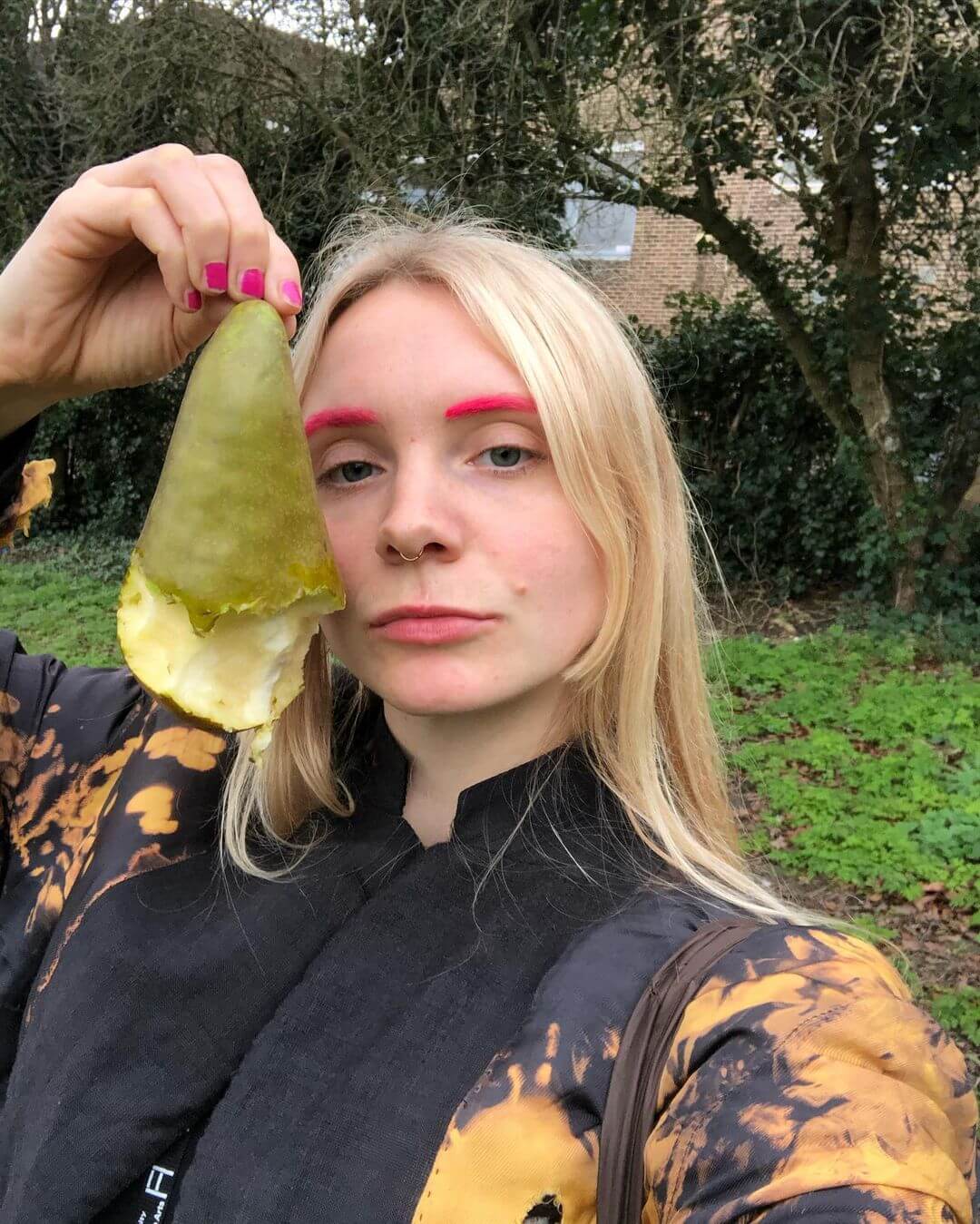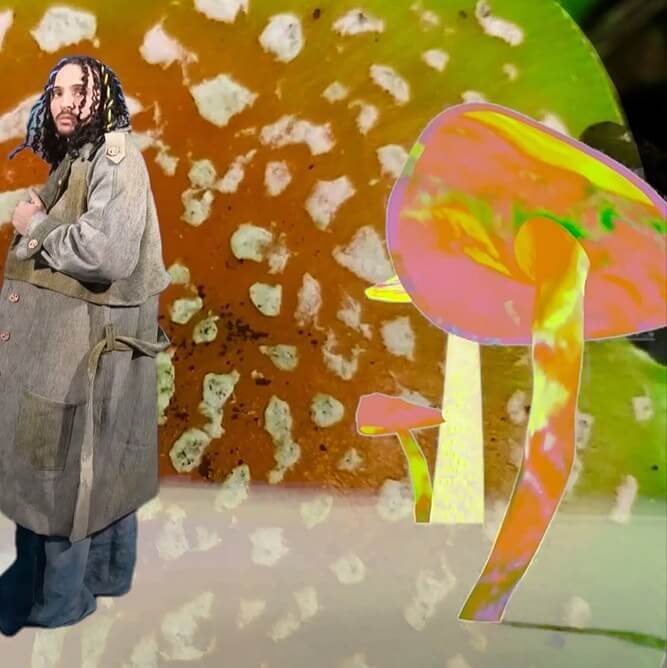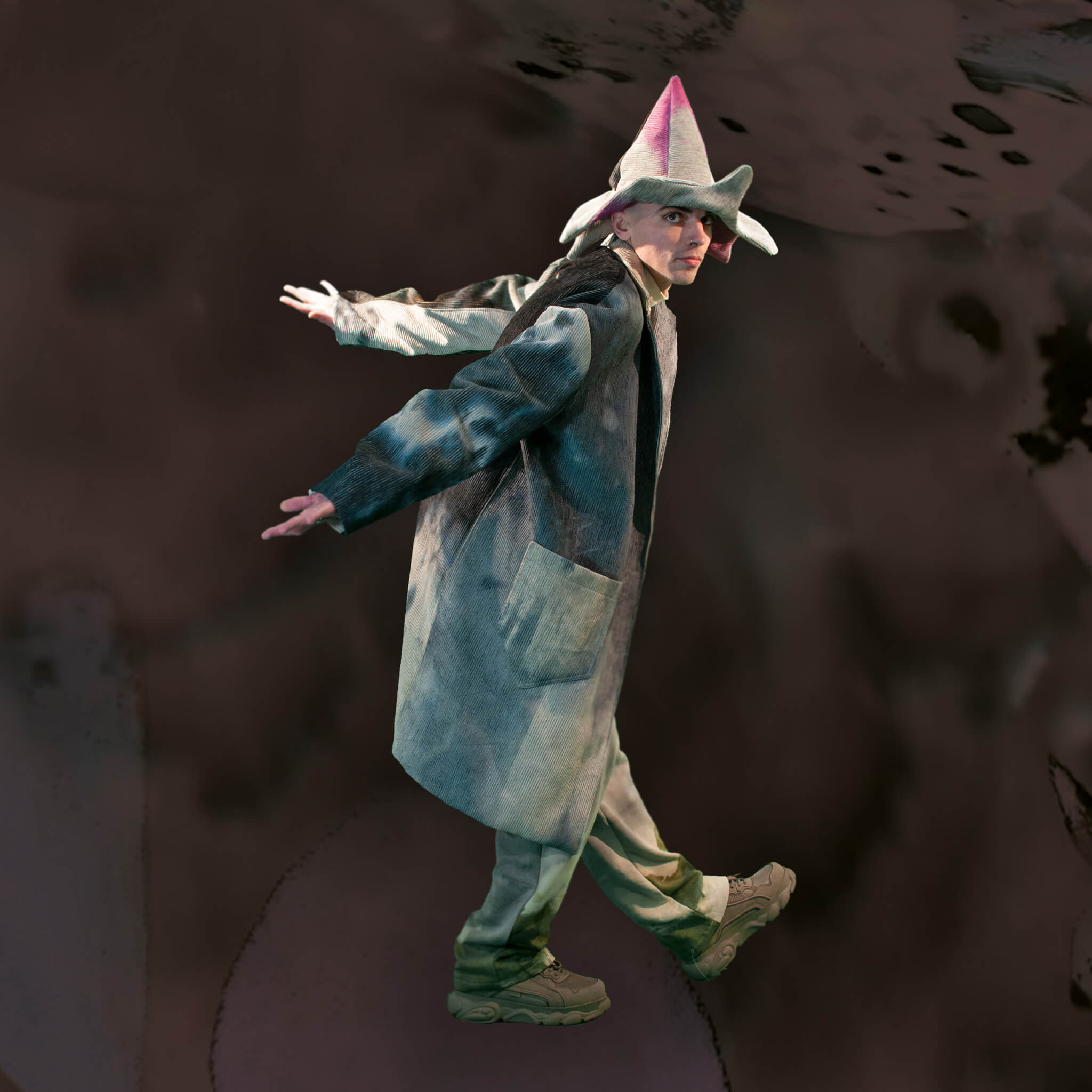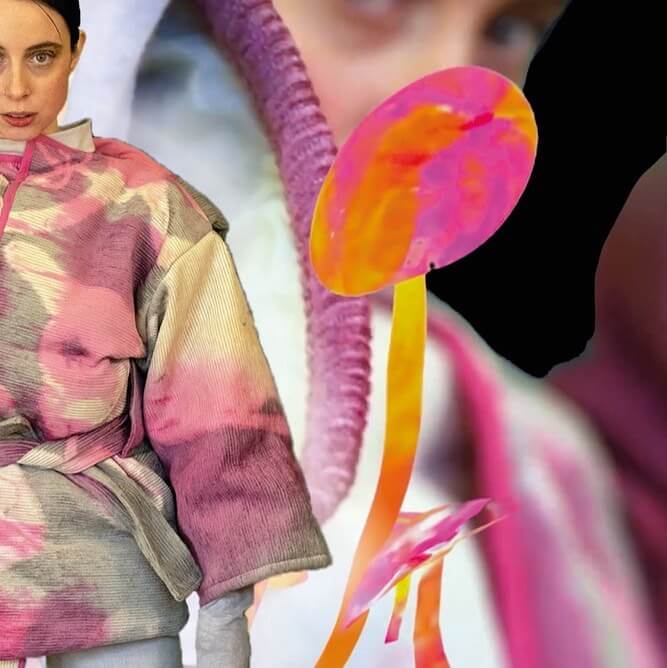
INTERVIEW BECK DIAZ @hypebeck
ALL PHOTOS COURTESY OF EIRINN HAYHOW @eirinnhayhow PHOTOGRAPHY KATEE PAIGE-MCLEAN @katee_pm MAKEUP MARTA MERLO @martamerlomakeup GRAPHIC DESIGN DREAM SAFARI @dream_safari
How did you fine tune your design skills and manage to show your collection at LFW?
Each collection is connected to a period of discovery in my life. I draw most of my inspiration from nature and try to take everyone on a philosophical, spiritual and scientific journey, educating them through the narrative of each collection. I give it everything, as if I had poured it from my soul! My ideas are spontaneous, organic, pure and playful. I was just so honoured to show my Magic Mushrooms Campaign at London Fashion Week this season! I like to believe that if you are incredibly determined and true to yourself, good things can happen!
“See the beauty in everything, find the light in the darkness” How did you come up with this brand philosophy, and how did it translate into sustainability?
‘See the beauty in everything, find the light in the darkness.’ ‘Don’t be afraid to bloom in the dark.’ ‘Flowers Grow in Dustbins!’ These are all key messages within my brand philosophy, as I hope to empower people in any way they need it. These words come across so clearly as they are woven in my own philosophy for life. The two are intertwined – make your life a work of art, and your art a work of life. I always try to see the light in every situation and let any bad experiences make me stronger. I lost my mum when I was 22 and my dad got very sick at the same time, so this was pretty traumatic for me. My mum is the most fashionable woman I have known. Elegant and androgynous, she is always a huge influence on all my collections. For me, I feel like the bigger challenges you face, the braver and more determined you can become to strive for what you want in life. You can turn your trauma into triumph, you have to. There is no other choice. You just have to have the courage to see the light. I hope my brand helps others to find their light.
This message is also a direct link to sustainability. Seeing beauty in the unwanted, and salvaging unwanted materials, giving them a new life! Everything in the universe is recycled. Nature decomposes all matter back into the soil for it to grow into something new. We need to mirror this cycle within all areas of our production.
Can you take us through your dye process? How do you forage your plants and berries to get that perfect color?
For my natural dyes, I try to use food waste and forage plants as much as I can. Foraging is my favourite part. Taking long walks in the woodlands, countryside, and the seaside, to find things that I can eat, and also use for dyes. Ivy and Nettles are great for making greens, and hibiscus flowers make a beautiful silvery grey! I source avocados from local businesses, as well as from my dinner. I also use my filter coffee to make beautiful earthy browns.


It’s hard to be 100% sustainable as there are many aspects of the fashion industry that just aren’t as advanced yet. While your fabrics are sustainably made, are there any materials that don’t meet your ideal standards of sustainability?
I source many of my materials from Pilgrims Hospice, who cared for my mum in her last days. I donate a percentage of each collection pack into the charity for all their phenomenal support. I use the materials that they can not sell in their stores, preventing them going to landfill. Initially, I used all kinds of materials including polyester, pvc and other non- natural fibres. However, I am hugely into wellbeing, holistic living, and am a mostly raw vegan, so I wanted to stop using these fabrics in production. Doing research I became aware of the harmful effects of plastics on humans. As well as contributing to cancer and other life threatening diseases, EDC the chemical found in plastic, mimics the female hormone estrogen. There has been evidence found in fish that have been hugely contaminated with this chemical that their genders have morphed. They are no longer male, nor female. Could our plastic consumption be provoking a man made evolution? I now try to use predominantly natural fibres in all of my production. I source waste cotton and linen, and also use sustainable fibres from hemp, bamboo and fruit leathers.
Do you ever feel like you need to sacrifice a part of your visions because they can’t be made sustainably?
A little bit, yes. I am a huge lover of colour, and the kind of tones that you can create through natural dyeing are never quite as vibrant… However, I feel that it’s changed me! I now find myself drawn to much more calming, earthy tones. Natural dyeing is a really lengthy process too, it takes roughly two weeks to even prep the fabric for dyeing, so you have to be super patient. Working in a careful slow manner, and letting collections grow organically has definitely brought about some calm for me.
Being such a young designer already showing at LFW, do you feel like there is extra pressure for you to be considered “equal” amongst your peers as an “eco-designer”?
I am always looking to push the boundaries of sustainability and be different to what is considered the norm, so I guess I have no pressures in being equal.


You’ve put out such a stunning line, it proves that sustainability is beautiful. Can you speak as to why sustainable fabrics and designing is still a fringe practice? Is it due to cost? Labor? Time? All of the above?
Thank you so much, I am really so honoured to know that you feel it! Xx
I guess things are still slow, and people are still used to old methods of working. They also value money over saving the planet, which is what I am totally not about. But I think it is definitely all of the above. Like I mentioned, natural dyeing fabric takes weeks, and using materials like pineapple leather, hemp, and other fruit leathers are very expensive if you can’t make them yourselves. However I do see things changing, and we are definitely moving towards a more sustainable industry.
What’s next for you?
I am currently experimenting with my own biomaterials. It is so amazing, all the things you can do, It literally blows my mind! It is very early days, but this is the direction I want to move forward in. I am trying to do some exciting stuff with mushrooms (as you know I love them) and bioplastics using plants and food waste. I hope to produce some wearables within the next couple of years, and in the meantime I am working on my SS22 collection which I will be launching at London Fashion Week in September!
| Cookie | Duration | Description |
|---|---|---|
| cookielawinfo-checkbox-analytics | 11 months | This cookie is set by GDPR Cookie Consent plugin. The cookie is used to store the user consent for the cookies in the category "Analytics". |
| cookielawinfo-checkbox-functional | 11 months | The cookie is set by GDPR cookie consent to record the user consent for the cookies in the category "Functional". |
| cookielawinfo-checkbox-necessary | 11 months | This cookie is set by GDPR Cookie Consent plugin. The cookies is used to store the user consent for the cookies in the category "Necessary". |
| cookielawinfo-checkbox-others | 11 months | This cookie is set by GDPR Cookie Consent plugin. The cookie is used to store the user consent for the cookies in the category "Other. |
| cookielawinfo-checkbox-performance | 11 months | This cookie is set by GDPR Cookie Consent plugin. The cookie is used to store the user consent for the cookies in the category "Performance". |
| viewed_cookie_policy | 11 months | The cookie is set by the GDPR Cookie Consent plugin and is used to store whether or not user has consented to the use of cookies. It does not store any personal data. |